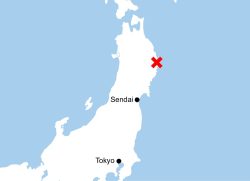Questioning of Hyogo Governor: Why was There Such a Hurry to Discipline a Whistleblower?
17:33 JST, August 31, 2024
If a top governmental official disregarded the whistleblowing system to suppress accusations against himself, it is unacceptable conduct. It is necessary to investigate the circumstances in detail and clarify the facts.
On Friday, a special investigative committee of the Hyogo prefectural assembly began questioning Gov. Motohiko Saito of the prefecture in connection with an internal accusation that he used his power to harass prefectural government officials, among other allegations against him.
In response to the harassment allegations, the governor stated that the actions referred to were “necessary guidance.” The questioning will continue, and the committee will compile a report by the end of the year. The governor should explain the numerous allegations to the people of the prefecture so that they are satisfied.
The heart of the matter is the prefectural government’s handling of a case in relation to the whistleblowing system. In March, a senior official of the prefectural government sent a letter to the media and other organizations accusing the governor of seven items of misconduct, including harassment. He then reported the same accusations to the prefectural office in accordance with the whistleblowing system.
In response, the prefectural government conducted its own investigation and took disciplinary action against the man, claiming that the contents of the document were groundless and constituted slander. The man died in July. It is believed to be a suicide.
The Whistleblower Protection Law prohibits any mistreatment of whistleblowers due to their whistleblowing. The prefecture’s acts of identifying the whistleblower and taking disciplinary action against him without waiting for the results of the investigation in response to the whistleblowing cannot escape suspicion of having been illegal.
When the committee examined witnesses on Aug. 23, a human resources department official testified to having received an instruction to consider early disciplinary action, even though this official had conveyed a message to the governor that disciplinary action must wait for the results of an investigation based on the whistleblowing system.
The official also testified they heard from others that the governor, who had been criticized over the accusations, said the disciplinary action would “change the direction of the wind.”
If true, this is quite outrageous. If the governor was trying to save his own skin by unfairly undermining and punishing the whistleblower who should have been protected, he absolutely cannot be allowed to continue in his position as governor.
The Japan Innovation Party, which supported Saito during the gubernatorial election in 2021 when he was first elected to the post, had remained quiet, but Osaka Gov. Hirofumi Yoshimura, a coleader of the JIP, has shifted his attitude and indicated that he may ask for Saito’s resignation.
The JIP, which continues to face headwinds due to the soaring costs of the 2025 Osaka-Kansai Expo and other factors, may be hoping to avoid going down with Saito if he falls.
In a survey of all prefectural government employees released by the committee, 40% of the respondents said they had seen or heard of workplace bullying by Saito. Many respondents also described numerous instances that called the governor’s dignity into question.
Whether or not all of these constitute workplace bullying, there is no doubt that many employees distrust the governor. It is difficult to expect smooth operation of the prefectural government under these circumstances.
(From The Yomiuri Shimbun, Aug. 31, 2024)
"Editorial & Columns" POPULAR ARTICLE
-

Artificial Intelligence Expands Possibilities for Foreign Language Learners
-

Build Intellectual, Physical Strength, As Well As Communicative Power / Japan Should Move from Beneficiary to Shaper of World Order
-

Global Economy in Turmoil: Prevent Free Trade System from Going Adrift / Risks to Financial Markets Must Be Heeded
-

Japan-China Strain Set to Persist as Beijing Officials Self-Interestedly Bash Tokyo; Takaichi Unlikely to Back Down
-

French and German Ambassadors to Japan Call for Democracies to Unite in Defense against Russian Disinformation
JN ACCESS RANKING
-

As Chinese Tourists Shun Japan, Hotels and Stores Suffer
-

Osaka-Kansai Expo’s Economic Impact Estimated at ¥3.6 Trillion, Takes Actual Visitor Numbers into Account
-

Japan Govt Adopts Measures to Curb Mega Solar Power Plant Projects Amid Environmental Concerns
-

BOJ Gov. Ueda: Highly Likely Mechanism for Rising Wages, Prices Will Be Maintained
-

Economic Security Panels Debate Supply Chains, Rare Earths; Participants Emphasize Importance of Cooperation Among Allies




















